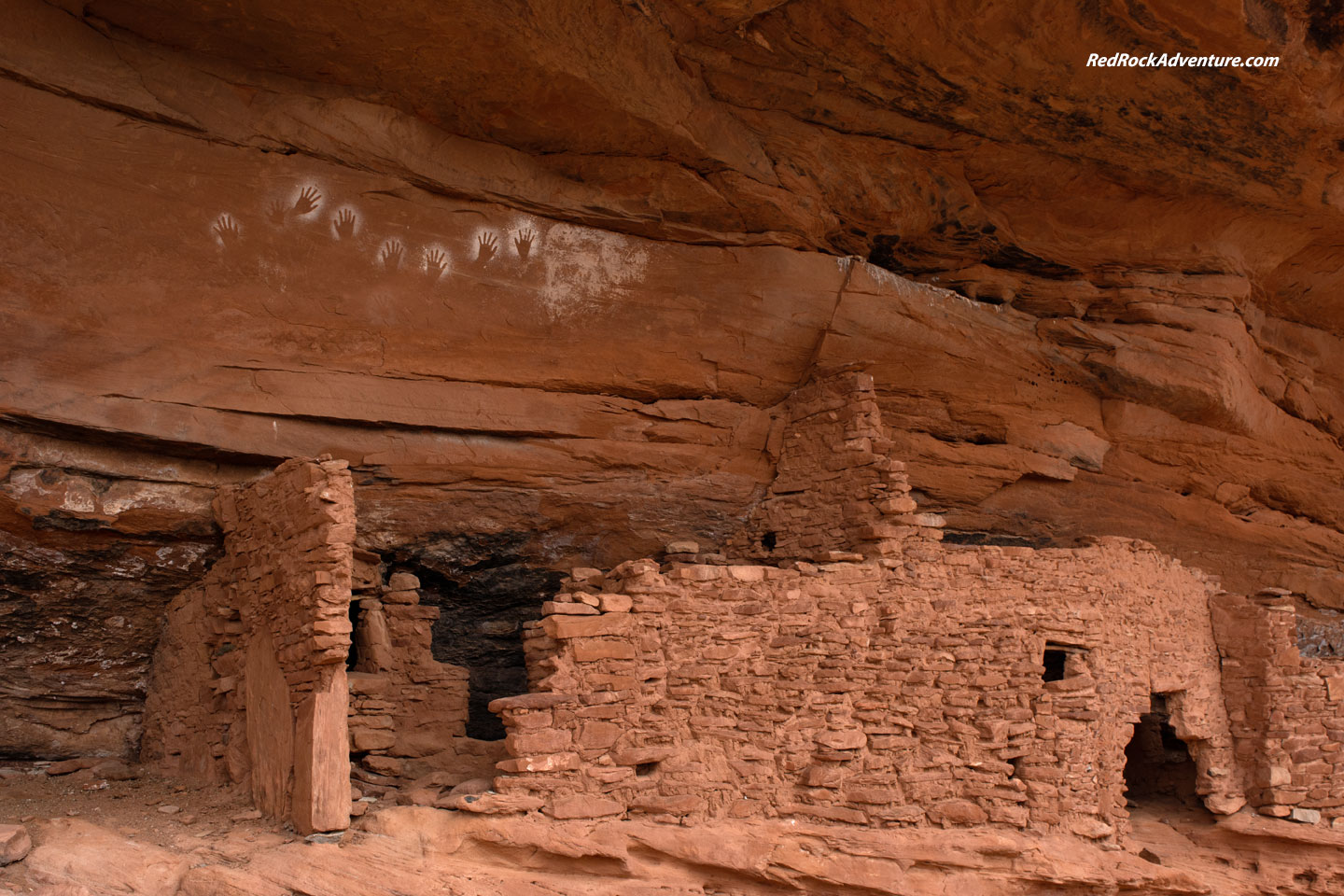
Dave Webb
March 15, 2024
We planned to hike into four Ancestral Puebloan (Anasazi) sites in the Bears Ears Comb Ridge area but had so much fun we never made it past the first two. They were amazing, with impressive ancient structures, rock art, flint chips, pottery sherds, and other artifacts.
Comb Ridge is a rugged area running north-south just west of US Hwy 191, mostly in SE Utah but extending into NE Arizona. It has sharp, craggy points that resemble a comb or saw.
The Ancestral Puebloan people left many remarkable structures along Comb Ridge and throughout the Four Corners region. Some, like Mesa Verde and Hovenweep, are famous and easy to visit. Others can only be seen by people willing to hike, backpack, or horse pack into the backcountry. Nearby, Grand Gulch shelters some of my favorite backcountry sites. Lately, I’ve been exploring the Comb Ridge area and it is impressive. Many places there compare with the more famous sites in Grand Gulch and up on Cedar Mesa.
We saw just two other people during a day of hiking along well-marked trails. We were impressed because sherds and other artifacts were visible but had not been looted. We did not see trash along the trails.
Much archaeological research has been done in this area but there are thousands of sites that have not yet been studied. Research is ongoing. Archaeologists ask people not to “cluster” sherds and other artifacts but many people do anyway. I respect the scientists and follow their advice. I don’t touch or climb on the ruins or cluster artifacts. I do shoot existing clusters, because they make impressive photos, as you can see here.
Many ancient rock structures use wood in roofs and for support over doors and windows. We did not find any intact roofs but it was fun seeing original wood built into many walls.
Often, ancient structures are built into alcoves where they are somewhat protected from erosion. We were delighted to find many relatively well-preserved structures here.
In the past, many sites here were plundered by pot hunters. It is difficult for law enforcement to protect backcountry sites. Hikers are required to register and pay a small fee, and that helps somewhat. Rangers do patrol as they can. Visitors are asked to help by being observant and reporting any problems they see. The biggest danger to sites now comes from enthusiasts “loving them to death.”
Weather was perfect for hiking on our first day, with daytime highs in the mid-60s F. The next day it was windy and rainy so we modified our plan and stayed in the front country. Nights were chilly, with the overnight low dropping down to 26 F. We had good gear and were comfortable even with rain, wind, and cold nights.
We had a great trip and plan to get back soon to see the rest of the sites on our list.














